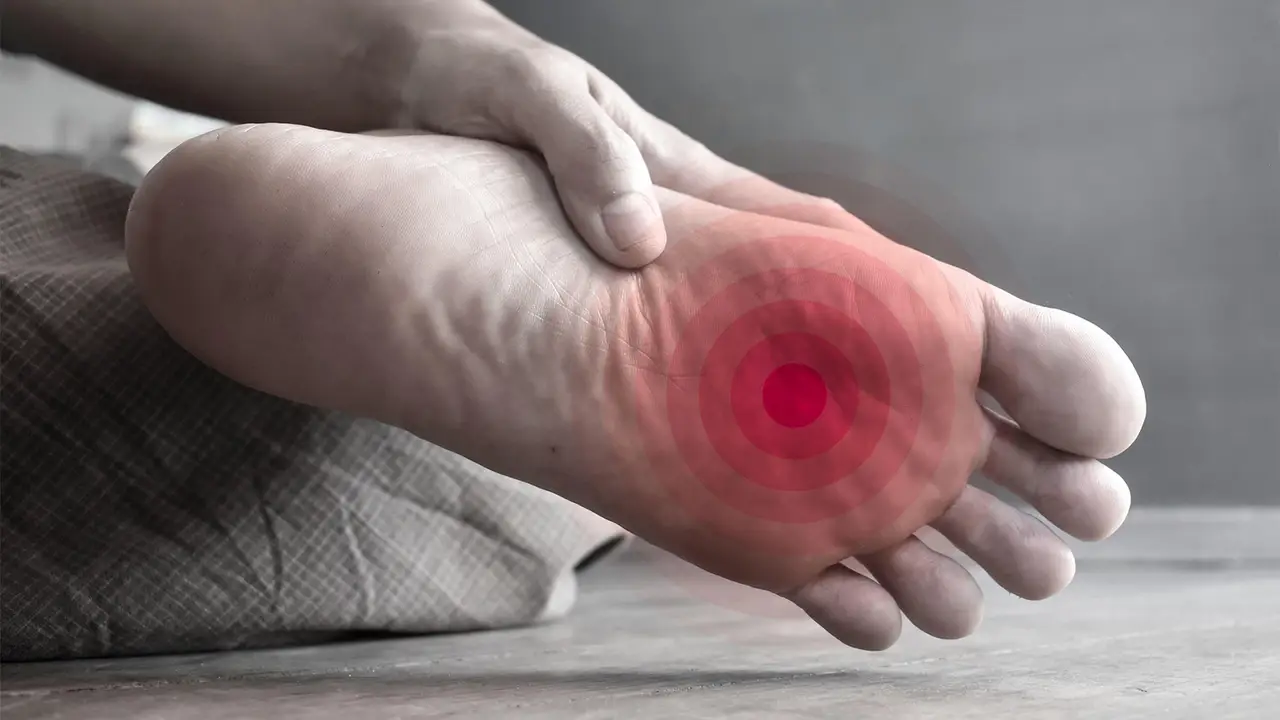If you’ve been feeling unexplained burning pain, tingling, or numbness in your feet, legs, or hands, you’re not alone. These may be early signs of a condition called Small-Fiber Neuropathy (SFN) — a type of peripheral neuropathy that affects millions of people across the United States.
Unlike traditional neuropathy, which impacts large nerves, small-fiber neuropathy specifically damages the tiny nerve fibers responsible for sensation and temperature regulation. The condition can be challenging to diagnose, but with early detection and the right treatment plan, relief is possible.
In this article, we’ll break down what small-fiber neuropathy is, its warning signs, diagnostic methods, and available treatments — plus, we’ll share a message of hope for living a better, pain-free life.
What is Small-Fiber Neuropathy?
Small-Fiber Neuropathy occurs when the small sensory nerve fibers in the skin are damaged. These nerves help your body detect pain, temperature, and touch. When they malfunction, you may experience painful sensations, numbness, or even autonomic issues like abnormal sweating or heart rate changes.
Common Causes of SFN
- Diabetes & Prediabetes – A leading cause of neuropathy in the U.S.
- Vitamin Deficiencies – Especially Vitamin B12 and B6.
- Autoimmune Diseases – Lupus, Sjögren’s syndrome, and celiac disease.
- Chemotherapy or Medications – Certain drugs can trigger nerve damage.
- Genetic Factors – Some people are more prone due to inherited conditions.
- Idiopathic Neuropathy – In many cases, the cause is unknown.
Early Signs & Symptoms of Small-Fiber Neuropathy
Recognizing the symptoms early can prevent further nerve damage and improve your quality of life.
Most common symptoms include:
- Burning, stabbing, or shooting pain in feet, legs, or hands
- Pins-and-needles sensation or tingling
- Numbness or reduced sensation in extremities
- Extreme sensitivity to touch or temperature
- Nighttime pain that disrupts sleep
- Autonomic symptoms like dizziness, digestive issues, or sweating abnormalities
Pro Tip: If you notice persistent tingling or burning sensations, especially in your feet, don’t ignore them. Early evaluation can slow progression and provide better treatment options.
How Small-Fiber Neuropathy is Diagnosed
Because small-fiber neuropathy affects the tiny nerves under the skin, traditional nerve conduction studies may appear normal. Doctors often recommend specialized tests, such as:
- Skin Biopsy – Checks for nerve fiber density in the skin.
- Quantitative Sensory Testing (QST) – Measures response to temperature and touch.
- Electrochemical Skin Conductance (ESC) – A newer, non-invasive diagnostic tool.
- Blood Tests – To detect diabetes, vitamin deficiencies, or autoimmune markers.
Early diagnosis is critical because treatments work best when started sooner.
Treatment Options for Small-Fiber Neuropathy
While there’s no single cure for SFN, there are effective ways to manage symptoms, improve nerve health, and slow progression.
1. Lifestyle & Home Remedies
- Maintain healthy blood sugar levels
- Follow an anti-inflammatory diet rich in vegetables, omega-3s, and whole grains
- Exercise regularly to improve blood circulation
- Limit alcohol and quit smoking
2. Medications
- Pain Relievers: Over-the-counter or prescription-based
- Antidepressants & Anti-seizure Medications: Such as duloxetine, pregabalin, or gabapentin
- Topical Treatments: Lidocaine patches or capsaicin creams
3. Supplements
- Alpha-Lipoic Acid (ALA) – Antioxidant shown to improve nerve function
- Vitamin B12 & Benfotiamine – Essential for nerve health
4. Advanced Therapies
- Neuromodulation & Electrical Nerve Stimulation
- Plasma Exchange (in autoimmune-related SFN)
- Clinical Trials – New treatments are emerging every year
Living with Small-Fiber Neuropathy: Finding Hope
A neuropathy diagnosis can feel overwhelming, but there’s good news: many people successfully manage SFN and live fulfilling, pain-free lives. With personalized treatment plans, regular monitoring, and lifestyle changes, you can significantly reduce symptoms and improve your overall well-being.
Remember, you’re not alone. Support groups, neuropathy specialists, and patient education resources are available to help you navigate your journey toward better nerve health.
Final Thoughts
Small-Fiber Neuropathy is more common than many people realize, but early detection and proactive treatment can make a huge difference. If you’re experiencing burning, tingling, or numbness, consult a neuropathy specialist to explore your options.
With the right care plan, nerve damage can be slowed, pain can be managed, and hope can be restored.
Follow us on social media!

Request Consultation
If you’ve been feeling unexplained burning pain, tingling, or numbness in your feet, legs, or hands, you’re not alone. These may be early signs of a condition called Small-Fiber Neuropathy (SFN) — a type of peripheral neuropathy that affects millions of people across the United States.
Unlike traditional neuropathy, which impacts large nerves, small-fiber neuropathy specifically damages the tiny nerve fibers responsible for sensation and temperature regulation. The condition can be challenging to diagnose, but with early detection and the right treatment plan, relief is possible.
In this article, we’ll break down what small-fiber neuropathy is, its warning signs, diagnostic methods, and available treatments — plus, we’ll share a message of hope for living a better, pain-free life.
What is Small-Fiber Neuropathy?
Small-Fiber Neuropathy occurs when the small sensory nerve fibers in the skin are damaged. These nerves help your body detect pain, temperature, and touch. When they malfunction, you may experience painful sensations, numbness, or even autonomic issues like abnormal sweating or heart rate changes.
Common Causes of SFN
- Diabetes & Prediabetes – A leading cause of neuropathy in the U.S.
- Vitamin Deficiencies – Especially Vitamin B12 and B6.
- Autoimmune Diseases – Lupus, Sjögren’s syndrome, and celiac disease.
- Chemotherapy or Medications – Certain drugs can trigger nerve damage.
- Genetic Factors – Some people are more prone due to inherited conditions.
- Idiopathic Neuropathy – In many cases, the cause is unknown.
Early Signs & Symptoms of Small-Fiber Neuropathy
Recognizing the symptoms early can prevent further nerve damage and improve your quality of life.
Most common symptoms include:
- Burning, stabbing, or shooting pain in feet, legs, or hands
- Pins-and-needles sensation or tingling
- Numbness or reduced sensation in extremities
- Extreme sensitivity to touch or temperature
- Nighttime pain that disrupts sleep
- Autonomic symptoms like dizziness, digestive issues, or sweating abnormalities
Pro Tip: If you notice persistent tingling or burning sensations, especially in your feet, don’t ignore them. Early evaluation can slow progression and provide better treatment options.
How Small-Fiber Neuropathy is Diagnosed
Because small-fiber neuropathy affects the tiny nerves under the skin, traditional nerve conduction studies may appear normal. Doctors often recommend specialized tests, such as:
- Skin Biopsy – Checks for nerve fiber density in the skin.
- Quantitative Sensory Testing (QST) – Measures response to temperature and touch.
- Electrochemical Skin Conductance (ESC) – A newer, non-invasive diagnostic tool.
- Blood Tests – To detect diabetes, vitamin deficiencies, or autoimmune markers.
Early diagnosis is critical because treatments work best when started sooner.
Treatment Options for Small-Fiber Neuropathy
While there’s no single cure for SFN, there are effective ways to manage symptoms, improve nerve health, and slow progression.
1. Lifestyle & Home Remedies
- Maintain healthy blood sugar levels
- Follow an anti-inflammatory diet rich in vegetables, omega-3s, and whole grains
- Exercise regularly to improve blood circulation
- Limit alcohol and quit smoking
2. Medications
- Pain Relievers: Over-the-counter or prescription-based
- Antidepressants & Anti-seizure Medications: Such as duloxetine, pregabalin, or gabapentin
- Topical Treatments: Lidocaine patches or capsaicin creams
3. Supplements
- Alpha-Lipoic Acid (ALA) – Antioxidant shown to improve nerve function
- Vitamin B12 & Benfotiamine – Essential for nerve health
4. Advanced Therapies
- Neuromodulation & Electrical Nerve Stimulation
- Plasma Exchange (in autoimmune-related SFN)
- Clinical Trials – New treatments are emerging every year
Living with Small-Fiber Neuropathy: Finding Hope
A neuropathy diagnosis can feel overwhelming, but there’s good news: many people successfully manage SFN and live fulfilling, pain-free lives. With personalized treatment plans, regular monitoring, and lifestyle changes, you can significantly reduce symptoms and improve your overall well-being.
Remember, you’re not alone. Support groups, neuropathy specialists, and patient education resources are available to help you navigate your journey toward better nerve health.
Final Thoughts
Small-Fiber Neuropathy is more common than many people realize, but early detection and proactive treatment can make a huge difference. If you’re experiencing burning, tingling, or numbness, consult a neuropathy specialist to explore your options.
With the right care plan, nerve damage can be slowed, pain can be managed, and hope can be restored.



